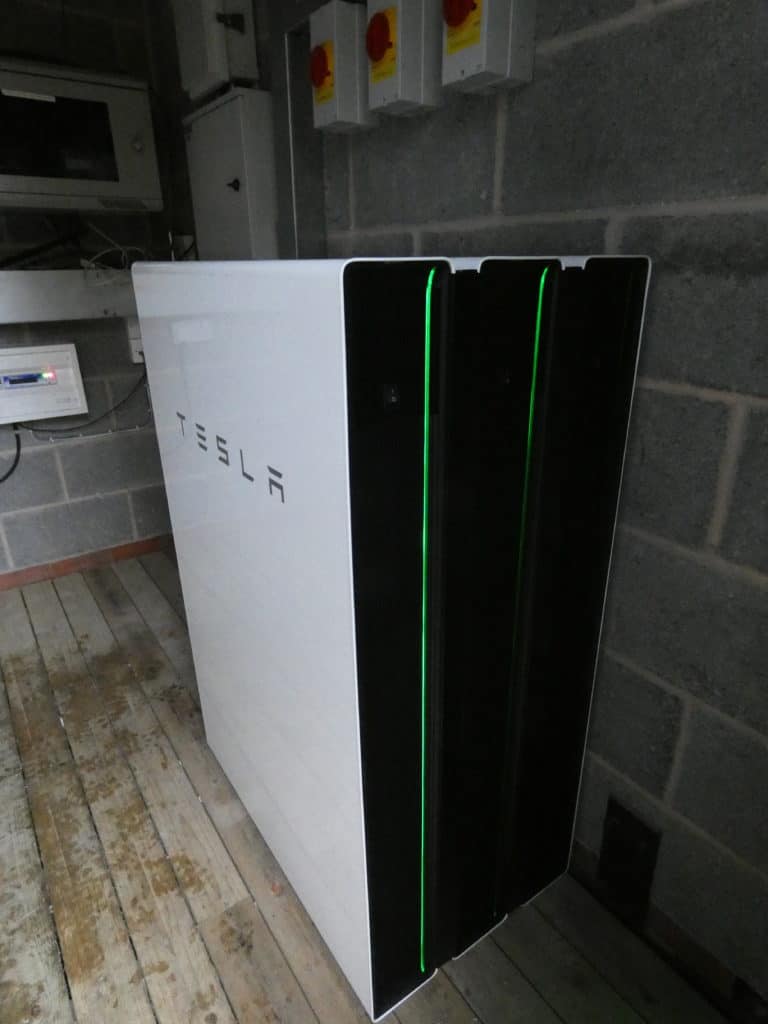In December 2019, ThamesWey commenced a new trial of utilising battery storage, where a centralised battery system was set up to capture spare renewable electricity generation from the rooftops of group of properties, to reduce reliance on the national grid and decrease the greenhouse gas emissions for the properties. Joju Solar installed three Tesla Powerwall batteries which have the ability to store 40.5 kWh of unused solar power generated during sunlight hours, and supply this back to the properties whenever they need it, even when the sun is not shining.
The centralised battery system provides a more effective way for the excess solar generated electricity to be utilised on a very localised scale. The benefit of a community system over individual battery units is that the properties have shared access to the stored energy, to use when it is really needed, no matter how much direct solar energy they have used. This evens out the natural variations in the way each household uses energy from differing lifestyles and means that less excess energy goes to waste and overall less grid energy is used. Read more about the system setup here.

ThamesWey has looked back at the data from the last 2 years to understand how the system has performed and the results are a testament to the effectiveness of this type of system. The monitoring shows that the use of grid electricity at ‘peak-times’, when national grid supplied electricity is typically generated from the most carbon intensive sources, has reduced significantly. Before installation, 11.5% of grid supplied electricity was needed during these peak times. During the first year of battery operation (2020), this reduced to 3.4%, but in the second year (2021) this figure reduced even further to just 0.5%, almost eliminating peak time grid electricity consumption altogether. The table below shows these results.
| Year | Peak time grid electricity consumption (kWh) |
| 2019 (before battery installation) | 4313 |
| 2020 | 1412 |
| 2021 | 239 |
Even during the winter months when no excess solar power is available, the battery draws energy from the grid overnight and stores it for use in the day. The overnight, off-peak electricity is typically generated from the cleanest energy sources, so both the cost and carbon intensity is much lower. By using this stored grid energy during peak hours, instead of directly using ‘peak time’ grid electricity, the households are reducing their carbon emissions by around a third. The Tesla system intelligently learns how the households typically use their electricity to operate in the most efficient way, the improvement in performance from 2020 to 2021 shows the progress and impact of this learning.
The project has successfully demonstrated how the energy generated from a zero carbon energy source can be maximised whilst also providing a benefit of reducing pressure on the national electricity grid during peak times. This installation forms an important part of ThamesWey’s ongoing commitment to transition to sustainable, zero-carbon energy and is another step towards a carbon neutral future for Woking.

